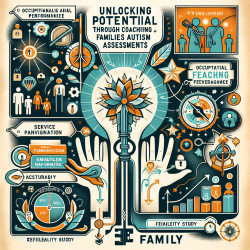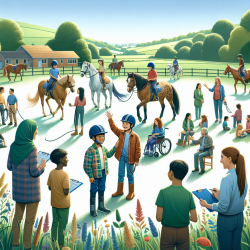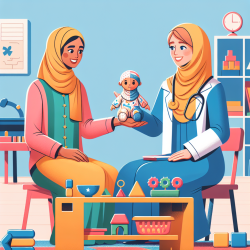In the realm of pediatric therapy, ensuring the holistic development of children with visual impairment is a complex and vital task. The recent study, "Vision-related tasks in children with visual impairment: a multi-method study," offers valuable insights into this challenge. This blog post aims to translate the study's findings into practical strategies for practitioners to enhance their skills and encourage further research.
Key Findings from the Study
The study identified a comprehensive set of vision-related tasks and categorized them under the occupational domain of the Occupational Therapy Practice Framework 4th edition (OTPF-4). These tasks were then sorted based on their difficulty levels and the children's age groups. Here are the main outcomes:
- A total of 180 vision-related tasks were identified and categorized into five main occupations: Activities of Daily Living (ADL), Instrumental Activities of Daily Living (IADL), education, play, and participation in social activities.
- ADL tasks, such as dressing and feeding, were found to be the easiest, while participation in social activities was the most challenging.
- Tasks were further classified based on the age groups of children: 0–3, 3.1–7, 7.1–10, and 10.1–16 years, with corresponding levels of dependency.
Practical Applications for Practitioners
Practitioners can leverage these findings to tailor their therapeutic interventions more effectively. Here are some practical applications:
1. Customizing Therapy Based on Task Difficulty
By understanding the difficulty levels of various tasks, practitioners can create individualized therapy plans that gradually increase in complexity. For instance:
- Easy Tasks: Start with basic ADL tasks such as dressing and feeding, which are easier for children to master.
- Moderate Tasks: Progress to IADL tasks like meal preparation and using electronic devices.
- Challenging Tasks: Finally, introduce more complex tasks like participation in social activities and community mobility.
2. Age-Appropriate Interventions
Tailoring interventions to the child's age group can significantly enhance the effectiveness of therapy. For example:
- 0–3 Years: Focus on high-dependence tasks such as feeding and personal hygiene.
- 3.1–7 Years: Introduce low-dependence tasks like dressing and simple meal preparation.
- 7.1–10 Years: Encourage independence in tasks like writing and drawing.
- 10.1–16 Years: Aim for high independence in tasks such as community mobility and social participation.
Encouraging Further Research
While the study provides a robust framework, further research is essential to refine and expand these findings. Practitioners are encouraged to:
- Conduct longitudinal studies to track the progress of children with visual impairment over time.
- Explore the impact of different environmental factors on the performance of vision-related tasks.
- Investigate the effectiveness of various assistive technologies in enhancing functional vision.
By implementing these strategies and contributing to ongoing research, practitioners can significantly improve the quality of life for children with visual impairment.
To read the original research paper, please follow this link: Vision-related tasks in children with visual impairment: a multi-method study.










